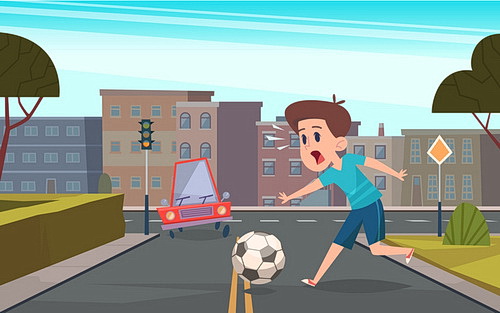
Keeping children safe when playing in the street is of utmost importance for parents and caregivers. While playing outdoors provides valuable opportunities for physical activity, social interaction, and exploration, it also comes with potential risks, especially in areas with traffic. Here are some essential tips to ensure your children’s safety when playing in the street:
- Supervision is Key: Always supervise young children when they are playing in the street. Adult supervision helps prevent accidents, ensures children follow safety rules, and allows quick intervention if a dangerous situation arises.
- Set Clear Rules: Establish clear rules for street play and make sure your children understand and follow them. Rules may include staying within designated boundaries, not chasing after toys that roll into the street, and looking both ways before crossing.
- Choose Safe Play Areas: Whenever possible, encourage children to play in safer areas away from traffic, such as parks, playgrounds, or cul-de-sacs. These locations offer more controlled environments and minimize the risk of encounters with moving vehicles.
- Teach Road Safety: Educate your children about road safety from a young age. Teach them the importance of using sidewalks whenever available and the proper way to cross streets at designated crosswalks or intersections.
- Look Left-Right-Left: Teach children the simple mantra of “look left-right-left” before crossing the street. This habit ensures they check for oncoming traffic from both directions before stepping onto the road.
- No Play in Blind Spots: Instruct children not to play in driveways, near parked cars, or around blind spots where drivers may have difficulty seeing them.
- Avoid Distracted Play: Discourage activities that might distract children from being aware of their surroundings, such as using electronic devices while playing near the street.
- Use Safety Gear: If your children are riding bikes, skateboards, or scooters in the street, make sure they wear appropriate safety gear, such as helmets, knee pads, and elbow pads.
- Educate About Vehicles: Teach children to recognize the sound of vehicles and the importance of moving out of the way when they hear one approaching.
- Play in Groups: Encourage children to play in groups rather than alone. Groups are generally more visible to drivers, and there is strength in numbers when it comes to road safety.
- Safe Routes: Identify and use safer routes with lower traffic volume and speed limits when walking or biking to nearby destinations.
- Neighborhood Watch: Work with neighbors to create a neighborhood watch system, where everyone looks out for the safety of the children playing outside.
- Be a Role Model: Demonstrate good road safety habits yourself. When children see adults following the rules, they are more likely to do the same.
- Teach Courtesy: Encourage children to be courteous to drivers. If a ball or toy rolls into the street, they should wait for the traffic to pass and find a safe opportunity to retrieve it.
- Set Playtime Boundaries: Establish specific playtime hours for street play, especially during peak traffic times, to minimize exposure to vehicles.
- Car-Free Zones: Work with local authorities or your community to designate certain areas as car-free zones for safer play.
- Regular Safety Talks: Have regular discussions with your children about street safety and reinforce the importance of following the rules.
- No Chasing: Instruct children never to chase after pets or other objects that enter the street. They should call for adult help instead.
- Encourage Safe Games: Encourage games and activities that keep children closer to the sidewalk or away from the street, such as sidewalk chalk art, hopscotch, or flying kites in open fields.
- Be Alert to Vehicles: Remind children to be cautious around parked cars, as drivers may back out without noticing them.
Remember, no safety measure can replace vigilant adult supervision and education. By implementing these tips and instilling good road safety habits in your children, you can create a safer environment for them to enjoy outdoor play while minimizing the risks associated with playing in the street.